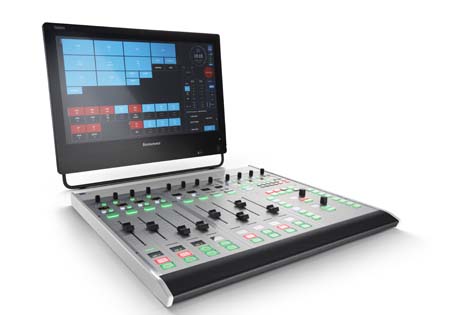Networked audio is the way forward for audio distribution, as it helps eliminate the shortcomings of analogue and is cost-effective, says Ryan Burr One of the most promising trends in the audio sector in recent years has been the emergence of digital audio networking. Traditional analogue distribution systems are plagued by an inherent complexity: the logical and […]

Networked audio is the way forward for audio distribution, as it helps eliminate the shortcomings of analogue and is cost-effective, says Ryan Burr
One of the most promising trends in the audio sector in recent years has been the emergence of digital audio networking. Traditional analogue distribution systems are plagued by an inherent complexity: the logical and physical connections are one and the same.
This means that building complex and flexible audio distribution systems is expensive and difficult, requiring large amounts of copper cabling and separate conduits for signals of differing voltages, and throwing up other complexities. No matter how you do the maths, running analogue cable is just plain troublesome!
Today, IT is indispensable to any organisation and connectivity is as much a basic amenity as running water. Businesses already have robust network cabling infrastructures in place, which are leveraged for their communication, data transfer, control and security requirements. In this modern environment, it’s no wonder digitally networked audio is generating such attention.
This approach lets you build flexible audio installations by using industry standard CAT-5 networking equipment instead of far more expensive and typically error-prone analogue cables.
Networked audio also helps eliminate the challenges of having to plan the audio cabling around existing utility structures and architectural hurdles, as it uses the network already in place.
It’s all about the money
Besides the immediate cost reductions from eliminating a large amount of cabling (even shielded cabling can be swapped out for its cheaper unshielded counterpart), labour and expensive analogue signal processing equipment, there are also long-term operational savings brought about by networked AV. As there is no longer a need for big, bulky boxes, which are hard to move and constantly in danger of being damaged and accidentally reconfigured, the cost of ownership drops.
Ease of installation
Networked audio gets rid of a number of concerns that plague analogue implementations. Installers can swap their soldering irons, metal connectors and testing equipment for far simpler RJ-45 clips and network cable crimping tools.
This means significantly less cabling, fewer connectors and simplified system design, which in turn translates to fewer points of failure and shorter installation timeframes. And with the availability of Power over Ethernet (PoE) equipment, even the hassle of having to wire the system to a power outlet is eliminated.
Rapid expansion
In a networked audio setup, the physical connections become irrelevant, since by using software controls, audio inputs can be dynamically routed from any input device to any output system as long as they are both connected on the network.
With a networked audio solution, you can disconnect, reconnect, route and reroute connections via software, meaning all modifications can be done without touching a single cable. And while expansions might call for a new switch or two to be added, it’s still far more straightforward than running new analogue connections.
Factors promoting adoption
So with all the evident benefits, is networked audio right for you or your customer? Well, as with any audio installation, the solution still needs to be dictated by system requirements rather than by industry buzzwords. This approach will, no doubt, favour some organisations more than others, but one of the main reasons digitally networked audio hasn’t yet completely overtaken analogue is the cost.
Today, however, the price difference has begun to erode due to the standardisation of protocols, which has introduced more choice into the market. Equipment can be swapped out far more easily, protecting long-term investments and safeguarding against vendor lock-in.
Finally, digitally networked audio is what customers are now asking for. They have already invested in IT cabling infrastructure, and their confidence in the security and reliability of these networks has encouraged them to ask why audio can’t be a part of this too.
But are we there yet?
There are several prominent players in the digital audio networking arena, including Dante by Audinate, EtherSound, CobraNet and Aviom. Different vendors are backing different protocols, while a number of players are developing their own proprietary technologies.
It is also worth mentioning MADI, which has been prevalent in the broadcast industry for quite some time. It allows a single thin cable to transmit up to 64 audio channels, lossless, over a distance of up to 2,000 metres.
The fact that we have to consider all of the different options is steering us towards a call for the standardisation of the protocol digital audio networks use. This is supported by the Audio Engineering Society, through their implementation of the AES 67 protocol in September 2013.Unfortunately, not all manufacturers of audio products have lent their support yet, but this seems close, with Audinate and QSC agreeing to the principle once they have ironed out the commercial implications.
Hopefully, other manufacturers will follow suit, thus alleviating the need for users to trawl through which products will work with which protocols and having to compromise on equipment.
With a wide availability of solutions that are clearly being developed according to a long-term roadmap rather than a passing trend, we see digitally networked audio as the way forward.
Ryan Burr is Technical Sales Manager for Sennheiser Middle East.
















































































